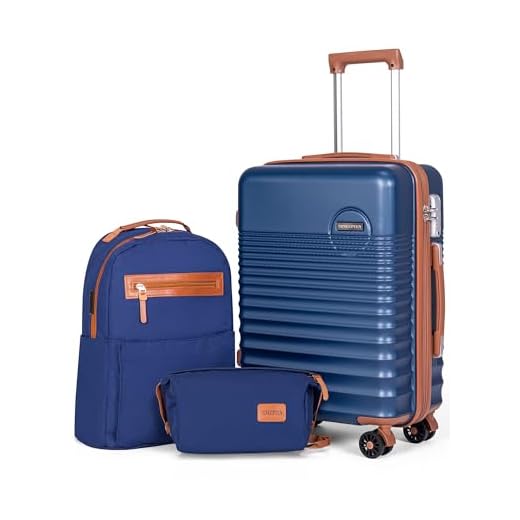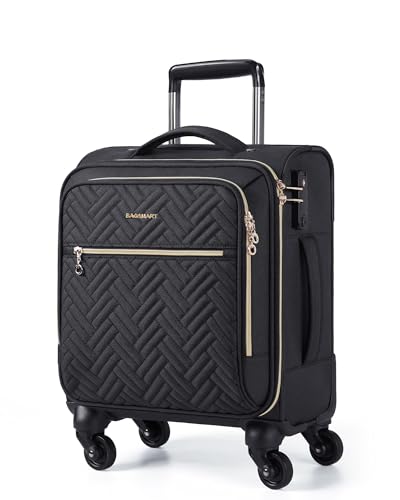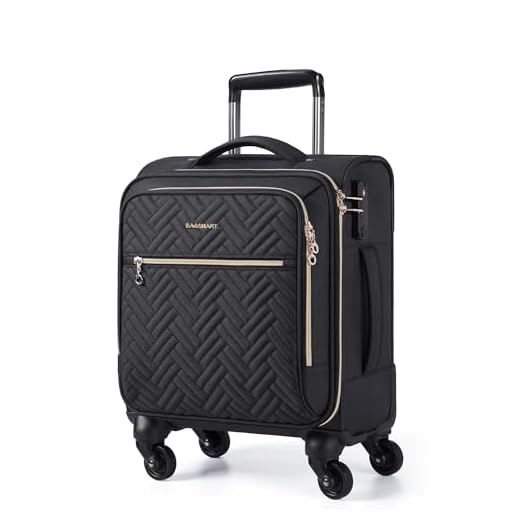



The maximum dimensions for personal belongings allowed without extra fees are 18 x 14 x 8 inches. This allocation ensures a suitable amount of space for essentials while adhering to airline regulations. It is crucial to measure your item accurately before heading to the airport, as exceeding the dimensions may incur additional charges.
For travelers wishing to maximize space, consider utilizing soft-sided bags that can be adjusted slightly to fit within the outlined measurements. Always check the most current policies directly from the airline’s website, as guidelines can change frequently. Being informed will help prevent surprises at the gate.
Packing wisely can significantly enhance your travel experience. Think about carrying smaller accessories such as zippered pouches or compression bags to organize items efficiently within the allowed space. Keep in mind that security checkpoints must also be considered, so pack items that may require easy access separately for convenience.
Size Specifications for Handheld Items on Spirit
The allowed dimensions for handheld items are 18 x 14 x 8 inches. This includes wheels and handles, so ensure your bag fits within these limits.
Tips for Packing Efficiently
- Choose a soft-sided bag to maximize space.
- Utilize packing cubes to organize items compactly.
- Roll clothing instead of folding to save space.
- Limit liquids to travel-sized containers (3.4 ounces or less).
- Wear bulkier items like jackets or boots to save room.
Checking for Additional Fees

Verify the website or contact customer service for any updates regarding fees for larger items or additional bags. It’s advisable to check before arriving at the airport.
Dimensions and Weight Limits for Carry-On Bags
The maximum allowable dimensions for a personal item are 18 x 14 x 8 inches. A standard carry-on should not exceed 22 x 18 x 10 inches. Both items must fit in the overhead compartment or under the seat in front of you. Weight restrictions typically apply to larger bags, often capped at around 40 pounds, but verifying specifics during booking is advisable.
Strategies for Compliance

Weight and size limits can be restrictive. To maximize space, consider using soft-sided bags that can be more easily adjusted to fit. Additionally, packing essentials in smaller containers can help reduce overall weight. Always measure your items prior to travel to ensure they meet airline requirements.
Extra Tips
Arriving early allows time to address any potential issues with size or weight at check-in. Some travelers may benefit from reviewing guidelines and packing techniques before their flight. For those interested in promotional design options, exploring best advertising umbrella factories can provide useful insights.
Allowed Items in Carry-On Luggage
Passengers may include a variety of items in their small bag. Personal items such as laptops, cameras, and essential medications are generally permitted. Additionally, travelers may pack clothing and toiletries, adhering to liquid restrictions.
Liquid containers must not exceed 3.4 ounces (100 milliliters) and should be stored in a clear, quart-sized zip-top bag. This ensures easy inspection at security checkpoints. It is advisable to keep valuables, important documents, and fragile items in easy-to-reach compartments.
Avoid carrying sharp objects, flammable materials, or items that could be considered weapons, as these are prohibited and will be confiscated at security. Gifts should be unwrapped to facilitate screening. Always check with the airline for any specific regulations on prohibited items and make necessary arrangements accordingly.
Fees for Oversized Carry-On Bags
Passengers exceeding the designated size for allowable personal items or baggage will incur fees. Charges for oversized items can be significant, impacting your travel budget. To prevent unexpected costs, it’s advisable to familiarize yourself with the pricing structure.
Fee Structure
For baggage that surpasses the maximum dimensions, a fee usually applies at check-in. The fees vary based on the size and weight of the item. Here’s a breakdown of potential charges:
| Item Size | Fee |
|---|---|
| Up to 50 lbs | $65 |
| 51-70 lbs | $100 |
| Over 70 lbs | $150 |
It’s crucial to ensure that your belongings fit within the stated limits to minimize extra expenses. Planning ahead can make a notable difference in your overall travel experience. If you need guidance on other topics, check out this how to electrify a fence for dogs resource.
Measure Your Bag Correctly
Utilize a measuring tape to ensure your item adheres to the outlined dimensions. Measure the height, width, and depth while including any external components such as wheels and handles. Confirm that the total exceeds neither 18 x 14 x 12 inches.
Check Weight
Utilize a scale to monitor the weight of your item, making sure it does not exceed 40 pounds. This includes all contents packed inside, ensuring compliance during boarding.
Confirm Fit
When you arrive at the airport, locate the sizing template typically available near the check-in counters or at the gate. Place your item within the frame to verify it fits comfortably without any overflow. This pre-check can save time and avoid additional charges.
Travel Tips for Packing Your Carry-On

Focus on lightweight materials to maximize space and reduce weight. Consider using packing cubes for organization, which can help compress clothing and free up extra room. Roll garments instead of folding; this method minimizes wrinkles and increases packing efficiency.
Prioritize Essentials
Pack only what you need; this includes toiletries, medications, and devices. Minimize the number of shoes as they take up considerable space. Wear bulkier items like jackets or boots during travel to save space in your bag.
Smart Use of Space
Fill gaps with small items like socks or chargers. Utilize the outer pockets for easy access to documents, snacks, or personal items. Double-check size specifications at check-in to avoid surprises.
Remember to adjust your packing based on destination and duration. Keep a checklist to ensure nothing critical gets left behind. With careful planning and strategic packing, your travel experience can be smooth and enjoyable.
Exceptions to the Carry-On Policy
Passengers traveling with specific medical devices, such as CPAP machines or certain assistive devices, are permitted additional items beyond standard restrictions. It is advisable to inform the airline prior to departure to ensure a smooth boarding process.
Infants traveling without a seat may have an extra item, such as a diaper bag, exempt from typical size limits. A stroller or car seat may also be checked for free, simplifying the travel experience for families.
Active military personnel often enjoy certain privileges regarding baggage allowances. It is recommended to verify with the airline’s customer service for precise details and any required documentation.
Seasonal promotions or specific fare classes might include enhanced baggage allowances. Always check the fare policy before booking to take full advantage of any potential benefits.
In cases of flight disruptions or cancellations, policies related to baggage may be adjusted. Passengers are encouraged to stay updated with airline communications regarding their specific situation.








